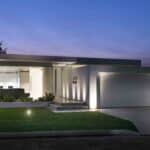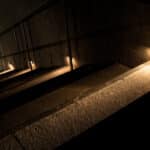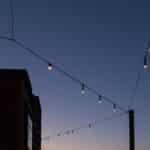Outdoor or landscape lighting adds another dimension to the enjoyment of outdoor living. It enhances gardens, decks, buildings, trees and homes. Outdoor lighting adds character to the environment, and entices you outside to enjoy the evening. Low voltage (12 volt) lighting is an ideal and safe way to illuminate your surroundings. MR16 Plug-in LED lamps give a white, crisp light with good colour rendition and have an excellent lamp life of 5000 hours or more.
Outdoor or landscape lighting adds another dimension to the enjoyment of outdoor living.
If you are about to build a new home, consider your lighting at the beginning of the project and not at the end where invariably you will have to make compromises and may be disappointed with the result. With a little planning you will be able to enjoy all the wonderful lighting effects that are possible to create with Hunza luminaires.
Hunza luminaires can be used for a variety of lighting applications including Up Lighting, Cross Lighting, Silhouetting, Water Reflection, Down Lighting, Shadowing, Wash Lighting, Step Lighting, Path Lighting and Moon Lighting.
In the Hunza MR16 range of luminaires, we offer six choices of standard halogen lamp wattages and beam angles. This allows a greater range of effects to be produced by the luminaire.

In most circumstances 20 watt lamps generate the desired effect in the garden or building illumination. A luminaire that uses a 20 watt lamp has three major advantages:
It will operate at a lower and safer temperature, and will not burn you.
The luminaire will use 60% less energy and therefore cost less to operate.
The luminaire will require less maintenance and lampholders will last much longer.
Installation
A quality installation is imperative for the longevity of your outdoor lighting. We strongly recommend that time is taken to select an installer with experience in low-voltage, outdoor lighting systems. Ensure the instructions supplied with each luminaire and transformer are followed meticulously to avoid failure – in particular ensure that the cable lengths will not cause voltage drop problems and make sure that all the cable joints are fully waterproof (see Cable Joint Kit and Anti-Syphon). Halogen lamps generate significant heat and should be positioned carefully to avoid injury.
Up Lighting
Up lighting is when the light source is placed in front of, and below, the object to be lit. It’s especially effective for highlighting a large focal point in the garden – a tree, a large shrub or architectural features such as pillars, walls, statuary and urns. Luminaire examples – see Driveway Lite, Floor Lite, Lawn Lite, NPS Spot, Spike Spot, ST50, ST100, ST150.
Cross Lighting
Cross lighting is similar to up lighting in that the light source is placed below and in front of the object to be lit. Where it differs is that the illumination comes from 2 light sources placed some distance apart from each other, angled back to the focal point. Luminaire examples – see NPS Spot, Pole Spot, Spike Spot, Single Pole Lite.
Silhouetting
Sometimes called back lighting, silhouetting is when the light source is placed behind the object to be lit. It can be used to create truly dramatic lighting effects. A solid object such as a statue will have its outline sharply defined but the details will be in shadow. A translucent object will glow and the lighter parts will be highlighted. Luminaire examples – see Floor Lite, Lawn Lite, NPS Spot, Spike Spot, Single Pole Lite.
Water Reflection
At night, a pool or lake is a mirror. Lighting an object near the edge of the water, or branches overhanging it, will create a reflection on its surface. On a still night it will be a perfect mirror image. When a soft breeze blows the reflection will dance on the ripples. Luminaire examples – see NPS Spot, Pond Lite, Single Pole Lite, Spike Spot.
Down Lighting
In down lighting the light source is placed above the object to be lit. Down lighting is usually used to emphasise the architectural features of a house or garden buildings, or to spotlight objects such as planters and benches. Luminaire examples – see Down Lite, Eave Lite, Pillar Lite, Wall Spot.
Shadowing
Like all lighting, garden lighting creates shadows that can be used to great, dramatic effect. Shadows of leaves, topiary, trellising or statuary can be projected onto walls, or across lawns, decks and terraces. Adjusting the size of these shadows can be a very effective way to evoke strong moods in the night-time garden. Luminaire examples – see NPS Spot, Pond Lite, Single Pole Lite, Spike Spot, Twin Pole Lite.
Wash Lighting
Wash lighting, as the name suggests, is used to wash a surface with light. The surface might be the ground, a wall, even a fence. The light source is placed as close as possible to the surface so the play of light and shadow emphasises the texture. Luminaire examples – see Border Lite, Down Lite, Driveway Lite, Floor Lite, Flush Washer, Mouse Lite, Pillar Lite, Step Lite, Washer.
Step Lighting
Whether lighting a single step on a garden path or an entire staircase, minimising glare is a critical safety issue as well as an aesthetic consideration. Unless steps are a distinctive architectural feature in their own right, the use of discreet luminaires that create minimal light spillage will create a safer walking environment and avoid distracting attention from more interesting garden features. Luminaire examples – see Mouse Lite, Step Lite, Step Lite Louvre, Step Lite Solid Eyelid.
Path Lighting
Path lighting needs no explanation but it does need careful planning. The light beam needs to be directed at ground level to avoid dazzling the walker, causing discomfort and possible injury. If a path is to be lit as part of a wider garden lighting scheme, keeping the path lighting discreet will enhance the impact of lighting elsewhere. Dramatic effects can be achieved by using path lighting to mark any boundary. Luminaire examples – see Border Lite, Path Lite, Single Pole Lite, Tier Lite, Walkway Lite.







